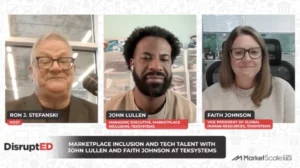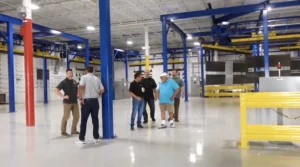Top 10 Manufacturing Trends in the Post-Pandemic Era
Agile factories, IoT, predictive maintenance, workforce transformation and safety, resilient supply chains and doubling down on data — these were all pandemic-driven trends that topped the manufacturing agenda in 2020.
But what lies ahead in 2021 and beyond? Here’s 10 trends driving how manufacturers will move through three phases of responding, recovering and revamping operations in the post-pandemic era.
- Resetting to address COVID-19 shifts: In the recovery mode, manufacturers are restarting activities, rehiring, resupplying and creating a plan for a stable state. As the economy reopens, manufacturers are looking at new durable execution strategies, while also closely monitoring changing business patterns.
- Employee safety and the new workplace: As production picks up, 61% of companies will develop hybrid models, using more automated, less human-intensive processes, according to Deloitte. One of the challenges is upskilling employees to work in these more technology-oriented environments. The 2020 Deloitte and MAPI Ecosystem Study reveals that more than 80% of surveyed manufacturers believe talent ecosystems are critical to their competitiveness, and 41% have already started forming new relationships — i.e., partnering with technical schools — to develop robust talent ecosystems.
- AR/VR: To combat the ongoing shortage of skilled labor and new proximity constraints, many manufacturers are leveraging augmented and virtual reality. Manufacturers will use augmented reality and virtual reality to help with remote training, guidance on repairs, guidance of assembly, remote product tours and quality reviews.
- IoT and digital twins to improve resilience and flexibility: 87% of executives agree that digital twins are becoming essential to their organization’s ability to collaborate in strategic ecosystem partnerships, according to an Accenture survey. Digital twin technology helps with remote training and to run what-if scenarios in the advent of disruption. Data from IoT sensors help monitor assets and enable the creation of connected products.
- Resilient supply chains and control towers: Control towers will provide companies with end-to-end visibility across the supply chain by correlating data across siloed systems. This will also provide enhanced capabilities to predict disruptions through smart alerts and to provide better collaboration and exception handling across the supply chain.
- Greater visibility using Big Data: Big Data using more third-party data sources will improve accuracy and resiliency of forecasting, provide better supplier evaluation, improve trend analysis and better determine customer preference. Companies can also leverage Big Data to optimize pricing for the best returns.
- Predictive maintenance: Unplanned downtime is costly. According to one study, of the 82% of companies that have experienced unplanned downtime over the past three years, those outages lasted an average of four hours and cost an average of $2 million. With data from IoT sensors connected to machinery, companies can automatically collect critical information about component wear and tear to schedule repairs and routine maintenance during scheduled downtimes, rather than having machinery break down unexpectedly.
- Artificial intelligence: AI will be integral throughout the organization, being used in forecasting and scheduling, predictive maintenance, shop floor schedule optimization, contact center agent recommendations, upsell/cross-sell recommendations, whitespace detection and price optimization.
- Agile decision making: This strategy enables companies to rapidly identify and respond to customer needs to protect and grow the top line, as well as to react quickly and manage various business disruptions (supply chain, etc.). Agile decision making empowers employees to be more productive and to collaborate effectively. The strategy also provides foundational robustness by increasing modularity and availability of core IT, helping to safeguard digital assets and ensuring financial liquidity.
- Increased focus on sustainability: Growing recognition of the environment and the need for conservation of natural resources have brought sustainability practices mainstream for both consumers and organizations. Customers and prospective employees alike want insight into what sustainable practices companies are pursuing. These practices also help reduce packaging and energy costs and can improve profits. Per Capgemini’s survey of 750 organizations, 77% of businesses say their sustainability approaches increase customer loyalty and 63% have seen revenue gains.
Manufacturers should pay close attention to these trends and align their business and technology strategies accordingly to maximize their operational execution and resiliency in the post-pandemic era.
By Paul Denmark and Tim Harris
# # #
About the Authors
Paul Denmark has over 30 years of experience in leading cross-functional ERP and business transformation projects across a wide range of manufacturing and distribution companies throughout the US, South America, Europe, and China. He is a senior consultant with Ultra Consultants, a firm that has been on the front lines of ERP consulting, selection and implementation for digital transformation and competitive advantage for 27 years.
Tim Harris has over 15 years of ERP, CRM, and BI consulting experience. His experience ranges from building industry solutions for the postal industry supply chain with SAP to manufacturing, distribution, AEC and professional services solutions with Microsoft Dynamics. He is the Chief Strategy Officer for Arbela Technologies, a global consulting firm and top-rated Microsoft Dynamics 365 gold certified partner that empowers organizations to digitally transform and grow their businesses.
Follow us on social media for the latest updates in B2B!
Twitter – @MarketScale
Facebook – facebook.com/marketscale
LinkedIn – linkedin.com/company/marketscale









